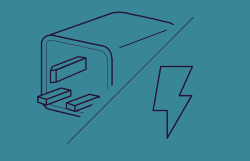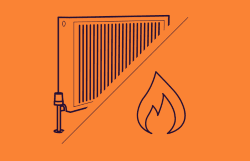It’s never been more important to make sure you’re on the best energy tariff available. With energy prices rising and the threat of climate change looming, it’s vital that we all do our bit to reduce our carbon footprints.
One way to do this is to switch to a green energy tariff. These tariffs are usually slightly more expensive than standard tariffs, but the extra cost is offset by the fact that you’re helping to save the planet.
Furthermore, many green energy tariffs come with no standing charge, so you’ll only pay for the energy you use. This makes them an excellent choice for those who want to be more environmentally friendly but don’t want to spend a fortune doing so.
In the ever-changing energy market, it can be hard to keep up with the best deals available and changes made seemingly overnight. But don’t worry – we’re here to help. This article will run through the best energy tariffs on the market in 2022, with a particular focus on those that have no standing charges hidden underneath.
What is a standing charge?
Standing charges are a daily fee that you have to pay just for being on that energy tariff, even if you don’t use any energy on that day. This fee is used to cover the costs incurred by your energy supplier when they provide you with energy. This includes the cost of maintaining and repairing the infrastructure that delivers energy to your home, as well as other overheads such as customer service.
The Standing Charge is typically a fixed fee and is separate from the energy charges that you pay for your actual consumption. In some cases, the Standing Charge may be reduced or even waived if you meet certain conditions, such as signing up for a long-term contract or paying by direct debit. However, it is important to note that the Standing Charge is not always optional – in many cases, it is mandatory. As such, it is important to be aware of the Standing Charge before signing up for any utility service.
These charges can add up fast, so it’s always worth avoiding the hassle by looking for a tariff that doesn’t have them to begin with.
Why might I opt into a tariff with standing charges?
There are a couple of reasons why you might opt for a tariff with standing charges. Firstly, if you have a low energy usage, then the standing charge may be lower than the unit rate you’re charged for energy. This means that you could actually save money by opting for a tariff with standing charges.
Secondly, some tariffs with no standing charges have higher unit rates. This means that even though you’re not paying the daily fee, you could end up paying more for your energy overall. If you think you might use a lot of energy, it’s always worth comparing the two to see which is cheaper.
So, what would our research team suggest if you were looking for energy without standing charges attached?
First up is the ‘Clean and Clear’ tariff from EDF Energy.
This is a 100% renewable electricity tariff with no other fees attached, meaning you’ll only pay for the energy you use. It’s also one of the cheapest tariffs on the market at the moment, so it’s definitely worth considering if you’re looking to switch.
EDF Energy ‘Blue+Price Promise’ tariff.
Clean and Clear is not the only option from EDF, with Blue+Price Promise being another tariff that fit our specifications. With no standing charge, this again requires a smart meter to be installed. With this deal, you will recieve discounts for electricity used during the day, with no charge for usage outside of those hours – perfect if you’re on a Time of Use meter and can shift your usage.
British Gas also offer a similar deal known as the “smart electric” tariff.
Thirdly, we found Green Energy UK’s ‘Go Green’ tariff.
The Go Green is also listed as one of the cheapest on the market, and it comes with 100% renewable electricity as standard. The unit rate is also very competitive, meaning that you could save money on your energy bills even if you do use a lot of electricity.
Another option is the ‘Npower Go Fair and Square’ tariff.
This is a slightly more expensive option per kWh, but it doesn’t have any standing charges or exit fees attached. This means you can switch to another supplier at any time without having to pay anything extra if it isn’t perfect for you.
British Gas ‘FreeTime’ tariff.
From British Gas, this one only available to customers who have a smart meter installed – but with the rollout into 2023, we don’t think this will be a problem, with some suppliers even offering to install your smart meter for free.
Their tariff offers discounts for electricity used during the day, with no charge for usage outside of those hours – perfect if you’re on a Time of Use meter and can shift your usage.
SSE ‘Swift’ dual fuel tariff.
SSE’s Swift dual fuel tariff offers a discount on both electricity and gas, as well as having no standing charge for either fuel. A smart meter is necessary for tariffs like these because per-unit rates change throughout the day, so you’ll need to be able to monitor your usage.
‘Online Energy Saver 11’ dual fuel tariff by Scottish Power
Scottish Power’s Online Energy Saver 11 is another great option for those looking for low energy costs with no standing charge. This tariff offers a discount on both electricity and gas, as well as giving you the option to manage your account entirely online.
Green Star Energy ‘Simply Green 12M Fixed’ tariff
Green Star Energy’s Simply Green 12M Fixed is a great option for those who want to lock in their energy prices for a year, with no standing charge for either electricity or gas. This tariff also offers renewable electricity as standard, so you can be sure that your energy use is having as little impact on the environment as possible.
Finally, a competition to any of the above suppliers would be the ‘British Gas Save £140’ dual fuel tariff.
Another from British Gas, this is one of the cheaper tariffs on the market, and has comes with a £140 in savings promised to owners for switching to British Gas. There are no exit fees or standing charges attached, so you can switch to another supplier at any time if the tariff does not meet your needs.
For more information about this post and how Energy Solutions can help with your Electricity, Gas, or Water, click on the links, or check out the contact details at the bottom of the page.
What is a no standing charge electricity tariff?
A no standing charge electricity tariff is a unique pricing plan offered by some energy suppliers that eliminates the fixed daily standing charge usually present in standard energy tariffs. In a regular energy tariff, consumers pay both a unit rate for the energy they use and a daily standing charge, which covers the cost of supplying energy to their home or business. However, with a no standing charge electricity tariff, there is no fixed daily charge, and consumers only pay for the electricity they consume based on the unit rate.
This type of tariff is particularly beneficial for individuals or businesses with low energy usage, as they can avoid paying a standing charge that would otherwise be a significant portion of their energy bill. It provides flexibility and cost savings for those who use relatively little electricity and do not want to be burdened by a fixed daily charge.
Consumers interested in a no standing charge electricity tariff should compare no standing charge tariffs offered by different electricity suppliers. By running an energy price comparison, they can identify suppliers that offer tariffs without a standing charge and choose the one that best suits their energy consumption patterns and budget.
It’s important to note that while a no standing charge electricity tariff may offer advantages for certain consumers, it might not be the most cost-effective option for those who use a lot of energy. In such cases, paying a standing charge alongside a lower unit rate might result in lower overall energy costs.
Why should I get no standing charge electricity?
Opting for a no standing charge electricity tariff can offer several advantages, especially for consumers who aim to save money, have low energy consumption, or desire greater flexibility in managing their energy costs. By choosing a tariff without a standing charge, individuals can tailor their energy plan to better suit their needs.
One of the main benefits of a no standing charge electricity tariff is cost savings. For those with minimal energy usage or irregular consumption patterns, paying a fixed daily standing charge can account for a significant portion of their energy bill. With a no standing charge tariff, they only pay for the electricity they use based on the unit rate, resulting in potential savings on their overall energy costs.
Furthermore, a no standing charge electricity tariff provides flexibility. Consumers who have low energy needs or seasonal usage can avoid the burden of a fixed daily charge and pay only when they consume electricity. This option is particularly advantageous for small businesses, where energy usage may fluctuate based on operational demands.
Switching to a no standing charge tariff is relatively straightforward. By comparing no standing charge tariffs offered by various electricity suppliers through an energy price comparison, consumers can identify the most suitable plan for their energy usage patterns and budget.
Moreover, for those who actively strive to be energy-efficient and reduce their carbon footprint, a no standing charge tariff aligns with their environmentally conscious efforts. The ability to use a lot of energy-efficiently without paying a fixed daily charge supports their green initiatives.
Are there any disadvantages to electricity with no standing charge?
While electricity with no standing charge may offer advantages for certain consumers, it is essential to consider the potential disadvantages before choosing such a tariff. Understanding the drawbacks can help individuals make informed decisions about their energy plans and usage.
One of the main disadvantages of a no standing charge electricity tariff is that it might not be cost-effective for consumers with high energy usage. Without a fixed daily standing charge, the unit rate for electricity tends to be higher to compensate for the absence of the standing charge. This means that those who use a lot of energy could end up paying more for their electricity compared to a tariff with a standing charge.
Moreover, a no standing charge electricity tariff might not suit households with a consistent and steady energy consumption pattern. Consumers who use electricity regularly may find that the fixed daily charge in standard tariffs provides stability and predictability in their energy bills, making it easier to budget and plan expenses.
Another potential drawback is that a no standing charge electricity tariff may not be available from all electricity suppliers. Consumers might have limited options when it comes to choosing a supplier that offers tariffs without a standing charge, reducing their ability to compare and find the most competitive rates.
Additionally, individuals who opt for a no standing charge electricity tariff must pay attention to their energy usage patterns and ensure they are not overpaying for electricity. Regularly monitoring energy consumption and comparing energy prices through an energy price comparison can help them avoid paying more than necessary.



